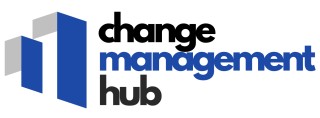
Understanding the Role of a Project Manager in Change Management
Navigating the Change Process in Project Management
In the landscape of project management, change is an inevitable component. A project manager plays a pivotal role in overseeing and managing these changes to ensure they align with the larger project scope and objectives. With changes often impacting timelines, resources, and outcomes, the project manager must act as a vigilant gatekeeper to maintain control over the project.
Changes can arise from various sources, including stakeholder requests or external market shifts. As such, the ability to effectively manage these change requests is crucial. This is where a solid change control process comes into play, enabling project managers to systematically evaluate, approve, or reject changes based on their potential impact on the project.
Team members also play a vital role in this process, as they provide the insights and feedback needed to assess the feasibility and implications of proposed changes. A collaborative approach helps in achieving a balanced decision-making process, which is essential to mitigating risks such as scope creep and ensuring project delivery remains on track.
An essential part of the project manager's responsibility in change management is ensuring that all changes are accurately documented in a change log. This log serves as a repository of all change requests, decisions made, and subsequent actions taken, providing the project team—and stakeholders—with a transparent view of the project's evolution over time.
The project's success heavily relies on how effectively the project manager can control and implement these changes within the established framework. For a deeper dive into how IT management frameworks and tools like ITOM, ITAM, ITSM, and ITBM can assist in navigating the complexities of change management, visit the change management hub.
Why Tracking and Recording Changes is Essential
The Necessity for Tracking Changes
In the fast-paced world of project management, tracking and recording changes is paramount. The seamless functioning of a project team heavily relies on effectively monitoring any modifications throughout the lifecycle of a project. Understanding the impact of these changes helps in maintaining control, ensuring that nothing slips through the cracks.
The main motivation for tracking changes comes from the need to manage scope creep. If a project diverges from its original plan without careful oversight, it may result in missed deadlines and increased costs. By implementing strong change control processes, project managers can safeguard against these issues, maintaining the project scope and ensuring the ultimate success of the project.
Aiding Project Efficiency
A management project without a systematic way to handle change is at the risk of chaos. That's why a comprehensive change log, which documents all change requests and their details, is crucial. By keeping a detailed record, project managers have a clear overview of the changes being implemented and can measure the impact they have on the project timeline.
Utilizing a change log also assists in identifying patterns or recurring issues, giving the project team the ability to proactively address them. Furthermore, by tracking change requests meticulously, there’s a better chance of aligning the project with its strategic goals, avoiding pitfalls that could derail the entire project.
Ensuring Team Alignment and Collaboration
Tracking and recording changes facilitate seamless communication among team members as well. When everyone in the project team is on the same page about changes, it minimizes confusion and enhances collaboration. Managing a change project this way becomes less daunting and more systematic, helping the team to stay cohesive and focused on the project's objectives.
Effectively recording changes not only aids in maintaining control but also helps in boosting the overall management change strategy. For those looking to deepen their understanding of project and change management, including their key responsibilities, diving into relevant resources can prove invaluable.
Tools and Techniques for Effective Change Tracking
Tools and Techniques to Support Your Change Management Efforts
To manage change effectively in any project, it's essential to employ a robust mix of tools and techniques. These resources help track and record changes systematically, ensuring nothing falls through the cracks during the project lifecycle. A widely used approach is utilizing project management software. This software consolidates needed data and provides a structured way for team members to log changes and coordinate activities. These platforms often come with integrated change control boards that facilitate evaluating and approving change requests. They make the tracking of changes more transparent and concise by documenting every change effort in a centralized change log. This documentation can help prevent scope creep and optimize the control process. Another indispensable tool is a detailed change management plan. Developing a solid plan early on aids project managers in setting clear guidelines for handling change requests. It serves as an anchor for managing expectations and streamlining processes. The plan typically includes the steps to submit a change request, the criteria for approval, and how the impact of changes on the project scope or timeline will be assessed. Additionally, conducting regular change management meetings with the project team is an effective strategy. These meetings provide a platform for discussing potential adjustments, reviewing current change requests, and ensuring alignment among all team members. Such practices enhance collaboration and foster a proactive approach in decision-making. Finally, training in statistical process control can be invaluable. By understanding statistical analysis, project managers can better predict and quantify the impact of changes, making data-driven decisions more effectively. Check out this link to enhance your skills. By adopting these methods and leveraging appropriate tools, project managers are better equipped to maintain control over their projects and achieve long-term success in their change management efforts.Challenges in Change Management and How to Overcome Them
Addressing Obstacles in the Change Management Journey
When managing project changes, project managers often face an array of challenges that can complicate the change control process. These hurdles may arise at any stage in the lifecycle of a project, and effectively overcoming them is essential for the successful implementation of change management strategies.
Scope Creep and Change Requests
One of the most common challenges is scope creep, which can lead to unplanned changes that exceed the original project scope. This can result in increased time, costs, and resource allocation. To tackle this, project managers must have a coordinated change management plan that involves key stakeholders and a clear change control board. Judiciously assessing and approving change requests helps ensure that the change project aligns with its original objectives while accommodating necessary alterations.
Effective Communication and Team Involvement
Communication barriers can also hinder the progress of managing changes. For a project team to thrive, it's vital that all team members are informed and engaged with the change process. By establishing a robust communication plan, project managers can ensure transparency and clarity regarding change requests and modifications. Regular updates and involving team members in discussions boost morale and collective commitment to the project goals.
Time Management in Change Implementation
Handling time constraints is another critical aspect. Project managers must balance implementing changes with the project timeline to prevent delays. Utilizing project management software can help track how changes impact deadlines and adjust schedules accordingly. This allows the team to manage expectations and deliver results within the agreed timeframe.
Overcoming Resistance and Fostering Adaptability
Resistance to change is a natural response from team members and stakeholders. Managing this resistance requires understanding its root causes and addressing concerns through change management practices. Training and support sessions can help team members adapt to changes and appreciate the positive impacts these changes bring to the project.
Best Practices for Recording Changes
Implementing a Robust Change Log
In the intricate tapestry of managing projects, recording changes effectively can make or break a project's success. A meticulous change log acts as a fundamental anchor in change management, serving both as a historical record and a guide for future decisions. Let's delve into how project managers can implement best practices when maintaining a change log.- Standardization of Processes: Implementing standardized procedures helps in maintaining consistency across project changes. A clear change log template ensures all entries are uniform, making it easier for team members to interpret and act upon them.
- Involvement of the Project Team: Engaging the project team in logging changes helps to maintain accuracy and comprehensiveness. Every change, be it minor or significant, should be recorded promptly, ensuring that all team members are aligned.
- Change Control Board (CCB): Having a dedicated team or board to review and approve change requests ensures that scope creep is kept under control. This team can evaluate the impact of changes and decide the best course of action for both approving and documenting these changes effectively.
- Utilizing Management Software: Employing specialized management software can be invaluable. These tools not only automate the change logging process but also integrate seamlessly with other project management processes, offering a comprehensive view of ongoing and past changes.
- Regular Review and Updates: A change log should be a living document. Regular review sessions can help ensure that all changes are captured accurately and that any pending actions are addressed in a timely manner. This practice also aids in identifying patterns in change requests, allowing for proactive management strategies.
The Impact of Change Management on Project Success
Consequences of Effective Change Handling on Overall Project Outcomes
Understanding the cascading impact of change management on project success can significantly bolster a project's capacity to meet its objectives. A well-handled change process ensures that alterations in the project scope, timeline, and resources are systematically documented and implemented, leading to enhanced control over project deliverables.- Enhanced Project Performance: Proper tracking and recording of changes streamline the management process, offering clarity on project progress and future pathways. This clarification helps project managers maintain control over the project without succumbing to scope creep.
- Increased Team Efficiency: By fostering a structured environment through tools and strategies, the project team can manage change requests effectively, leading to proficient time utilization and minimized resource wastage.
- Improved Stakeholder Satisfaction: When changes are managed efficiently, stakeholders experience minimal project disruptions. This management increases stakeholder trust and confidence through clear communication of change impacts and eventual successes.
- Mitigation of Risks: Employing a robust change log and control board facilitates proactive risk management. This change control approach equips teams with the tools needed to anticipate potential issues and adapt their strategy accordingly.
- Strategic Decision-making: Accurate and timely records of change requests and their specific impacts empower project leaders to make informed decisions, aiming to align the project's progress with its initial goals.













